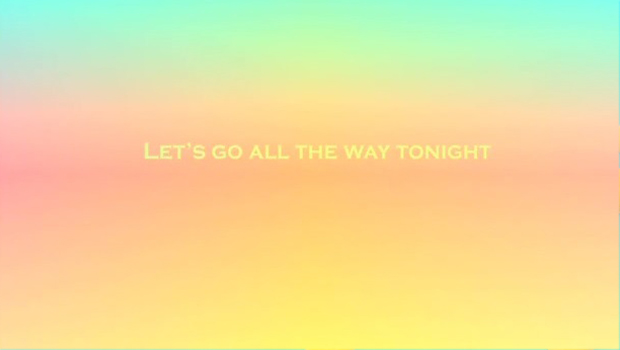Derek Curry’s artistic practice and academic research investigates how automated decision-making technology used in algorithmic stock trading and Open Source Intelligence gathering have augmented the nature of human agency and provided new spaces for intervention. Curry received his MFA in New Genres from UCLA in 2010 and is currently a PhD candidate in Media Study at SUNY Buffalo. He has participated in many international exhibitions and conferences, including ADAF 2016, SECRET at Science Gallery Dublin, MediaLive at the Boulder MoCA, Radical Networks, and the upcoming Web Biennial 2017.
Digital America is currently featuring Derek Curry’s piece, Public Dissentiment, as part of the Crooked Data: (Mis)information in Contemporary Art [site no longer live] exhibition at the University of Richmond Museums. You can view this piece here.
:::
DigA: Public Dissentiment rejects the idea that public opinion and online chatter is always reliable information. You are asking people to jam the system with targeted, negative data. Did the long history of culture jamming have a role in creating this application?
DC: Absolutely. Jamming the system is exactly what Public Dissentiment is intended to do. And it is coming directly out of the history of culture jamming and tactical media, and also heavily influenced by critical engineering.
DigA:High frequency trading (HFT) is a popular topic in digital studies—scholars from N. Katherine Hayles to Saskia Sassen write about the impact of HFT on our markets, nation-states, and physical bodies. What surprised you the most as you began to study HFT? Did this new knowledge shape your process as you created Public Dissentiment?
DC: What surprised me the most was the role that hackers or hacking played in the transition to the electronic stock exchange. The first automated trade on NASDAQ was literally a hack—Thomas Peterffy cut the cable to the machine and ran it through an oscilloscope. Then, in the 1990s, a group of day traders called ‘SOES Bandits’ began leveraging technology and the structure of the network for cross-market arbitrage—usually outperforming the established market makers like Goldman Sachs and JP Morgan. Soon, alternative platforms for trading called “Electronic Communications Networks” (ECNs) were created so the SOES Bandits could bypass dealing with the exchanges altogether, and tools for monitoring the market and automating the placement of orders were developed by this group of outsiders. The established market players tried to get the SEC to outlaw what the SOES Bandits were doing, but the SEC instead codified it because it was making the markets more accessible to ordinary people. So, the establishment had to adopt the same tactics and made the markets inaccessible again. Dark Pools are a type of ECN, and HFTs are using the same tactics pioneered by the SOES Bandits, only they have a lot more money, computing power, and socio-political clout at their disposal. (Anyone who isn’t concerned with net-neutrality should look into what happened with the stock exchange). There is so much more to the story, and it is really fascinating… the first chapter of my dissertation is about this transition from a Foucauldian enclosed space to Deleuze’s space of free-floating control and the hacker replacing the saboteur.
DigA: Although it’s a digital tool, Public Dissentiment requires people and organizations—two critical components of protest movements that have been criticized in recent years. How can applications like this attempt to overcome the negative label of “slacktivism?”
DC: This is a great question. First, let me say that I know “slacktivist” is a pejorative term, but it also reminds me of Critical Art Ensemble’s “slacker Luddite,” who was a figure of resistance to contemporary capitalism. (in case you need a reference URL: http://www.critical-art.net/books/ecd/ecd4.pdf) But, I completely understand why people who have participated in protests where they have been subjected to physical abuse or the legal system would have a dislike for slacktivism—it is so easy and safe by comparison. In that way, I think it is good to have labels for these types of protest devices that highlight the lack of effort and risk involved—people who sign online petitions shouldn’t compare themselves people who put their lives at risk. On the other hand, there have been protests that happened in the streets that were largely ignored by both the media and the institution that was being protested. I intended for Public Dissentiment to be a tool that could be used in conjunction with other tactics, including: physical protests and other types of direct action, boycotts, and involvement in the larger political process. This is why I tried to make the app very mobile friendly and the introductory animation on the site says, “from the streets to the servers”, I hope it will be used in conjunction with embodied protests to make them more effective, not as an alternative or a replacement.
DigA: The simplicity of Public Dissentiment’s approach is what makes it so brilliant. Much like DDoS attacks, you are using existing digital infrastructures to cause disruption. Still, people have been jailed for taking part in DDoS attacks, even though they thought they were just protesting a company. Are you concerned that a successful Public Dissentiment protest could target individuals or have unintended consequences?
DC: Yes, this is a big concern for me. I have put a lot of thought and research into what the unintended consequences could be for users, and myself as the creator of the app. In electronic stock trading, HFTs use a strategy known as “spam-and-cancel,” which is similar to a DDoS attack and is illegal. (In spam-and-cancel, an HFT firm will flood the market with orders to either buy or sell a stock, depending on if they are trying to raise or lower a price and then cancel those orders before they are executed.) And it is illegal to spread misinformation about a stock that you are actively trading, so if a group tried to use Public Dissentiment to make money, that would be illegal. But, protest is considered a form of speech, and in the United States, the legal precedents unequivocally favor free speech. And, when using the app, the social media posts created all link to news stories, and all of the words it uses to generate the posts come from those stories—so a post made by Public Dissentiment is also protected by the freedom of the press. I know that there are situations where protestors are given charges disproportionate to their crime, but protestors within in the USA are protected by at least two points of the First Amendment. Also, if I can figure this out for an art project, it is highly unlikely that hedge funds with almost unlimited resources haven’t developed something similar (and probably better) years ago. So, if I am ever approached by the SEC, it would be interesting to have that discussion.
DigA: As you were designing the UI and UX for the application, were you drawing inspiration from other protesting applications? What inspired the design?
DC: The project itself was inspired by protesting apps like FloodNet and TXTMob, but when I started making the interface, I was looking closely at mobile apps used for stock trading, like Market Parse. Some of these apps completely black-box important aspects of how the app makes decision. So, I didn’t have a model design in mind for the UI, but I had some principles for what Public Dissentiment should and shouldn’t do. It was important that the interface is mobile friendly, and that the user has the ability to create their own post if they don’t want to use one that was generated by the app—neither of which is particularly innovative in 2016. I am critical of intuitive design; I think it can lead to people doing things without any consideration. I had contemplated creating a drop-down menu for people to select companies they want to protest from a list, but ultimately decided against it because I don’t want to encourage people to protest an organization simply because it happens to be on a list. However, I may develop a quick link feature where protestors can send or post a link to a protest in progress to save people the trouble of typing in a name. I envision the interface being tweaked according to the needs of the people who use the app. I really hope that users will contact me if they have suggestions for improvements or features that will make it more useful or easier for them to use.
DigA: Twitter has come under some scrutiny over the past few years. It’s a successful recruiting tool for ISIS, and Donald Trump won the Presidency by obsessively tweeting opinions and lies. What led you to Twitter as your main protest vehicle for Public Dissentiment?
DC: This is difficult to answer because Public Dissentiment evolved out of ideas I had while doing research for my dissertation, so there was a lot of unconscious conceptualization happening in the conceptualization stage of the project. But, there are two things that undoubtedly shaped the way I think about Twitter. The first is how Twitter developed out of Tad Hirsch’s (Institute for Applied Autonomy) TXTMob, a tool created to help protest the 2004 RNC. (See: http://publicpractice.org/wp/?p=779 and http://techpresident.com/news/22775/txtmob-twitter-how-activist-tool-took-over-conventions ) So, the potential for Twitter to be used for protest is largely built into the platform itself. The second thing is when Syrian Electronic Army hacked the Twitter account for the Associated Press in 2013. They posted a fake tweet that said a bomb had gone off in the White House and “Barak Obama is injured” and the markets instantly crashed. Human traders instantly knew the tweet was fake because the AP always refers to “President Obama” in its tweets. Any half-way decent Natural Language Processing algorithm could have detected an inconsistency like that—so I began to investigate how trading algorithms perform language processing. What I discovered was that high-frequency trading bots prioritize speed and risk aversion over accuracy! In other words, the algorithms aren’t calculating the probability that something on Twitter might be bullshit, they are simply looking for inconsistencies—and if they find any, they simply withdraw. When the HFT bots stop trading, liquidity vanishes and the market crashes for a few minutes. I guess if you combine those two stories, and want to make an artwork, the idea for something like Public Dissentiment would be an almost obvious conclusion.
DigA: Can you talk a bit about what you’re working on now and how Public Dissentiment fits in to your artistic practice?
DC: Right now, I am finishing my dissertation and working with Jennifer Gradecki on two projects: a twitter-bot alert system for Donald Trump’s tweets called WarTweets and a video game called Attack of the Zombie Banks. The bot is @TrumpsWarTweets and will tweet alerts in response to posts made by Donald Trump’s twitter account since his tweets have already caused the stock price of some companies to drop and affected international relations. WarTweets will be automated by the time he is inaugurated on the 20th, and Zombie Banks will hopefully be a free download in the Google Play store soon. After that, I would like to make some work that isn’t purely computer-based, but I don’t have a studio right now, so I’m not sure if that is an option yet. Public Dissentiment feels different from most of my artwork because it began as a research project that I hadn’t intended on making an artwork from. Usually my artwork involves some amount of research, either learning a skill or more about a specific topic, and the concept and form will both evolve as I learn. But in the case of Public Dissentiment, all of the research was completed before I came up with the idea. It reminds me of what Sol Lewitt said about the execution of conceptual art being a perfunctory affair, with all the planning and decisions made beforehand. I don’t know if this difference is noticeable to other people—if the project seems like an aberration from my other work—but the actual making of the project was much easier than most of the work I do.



